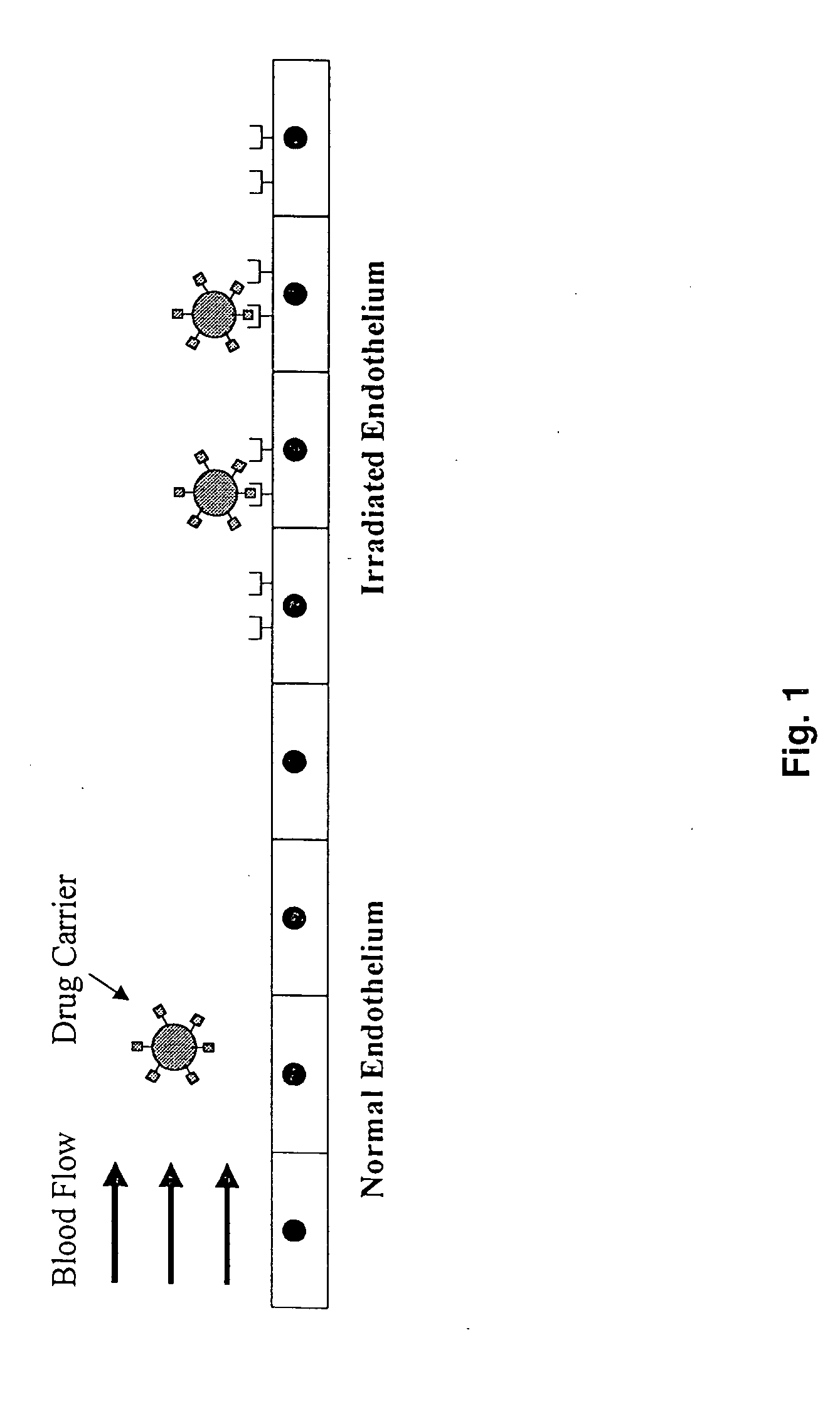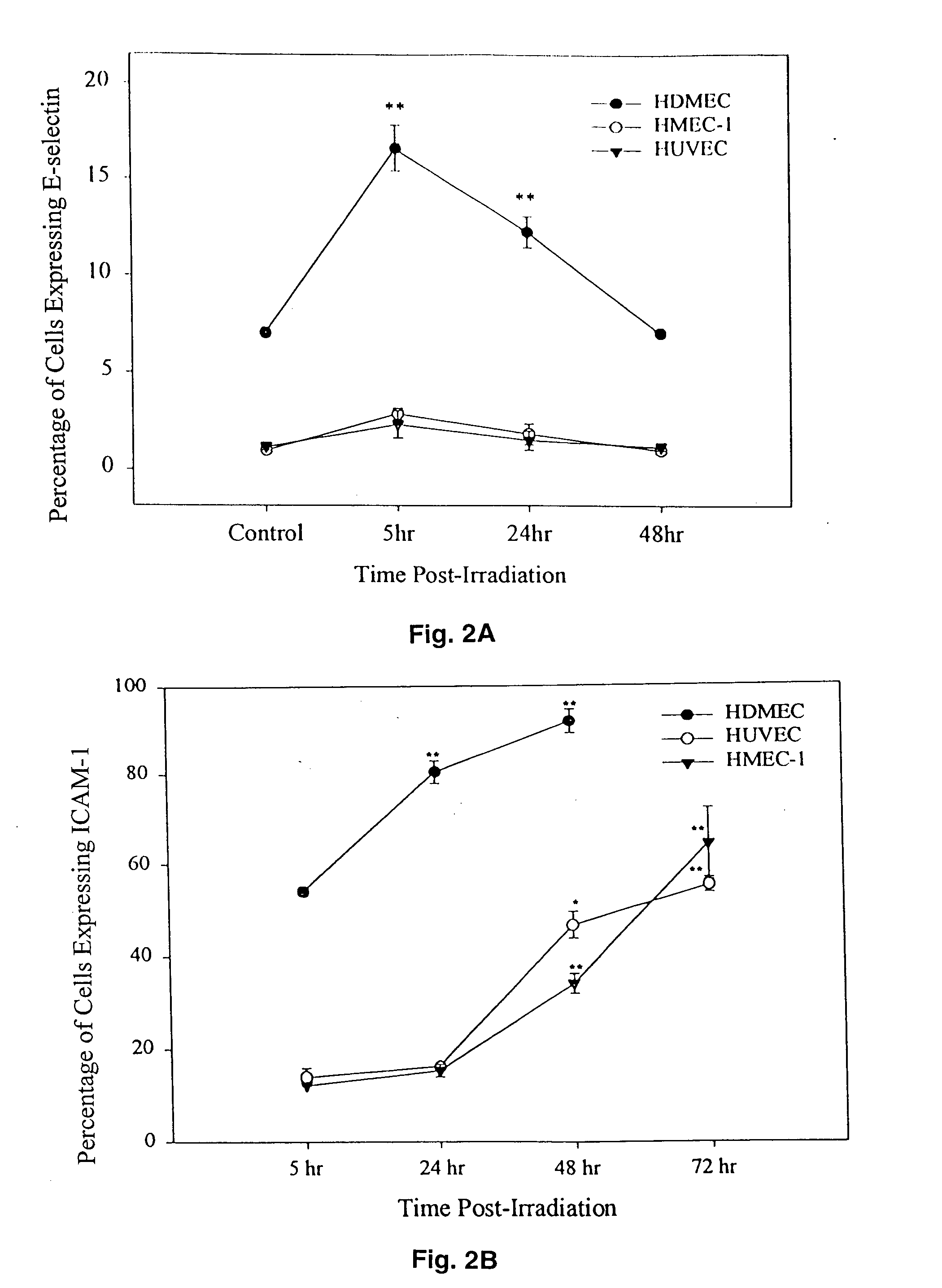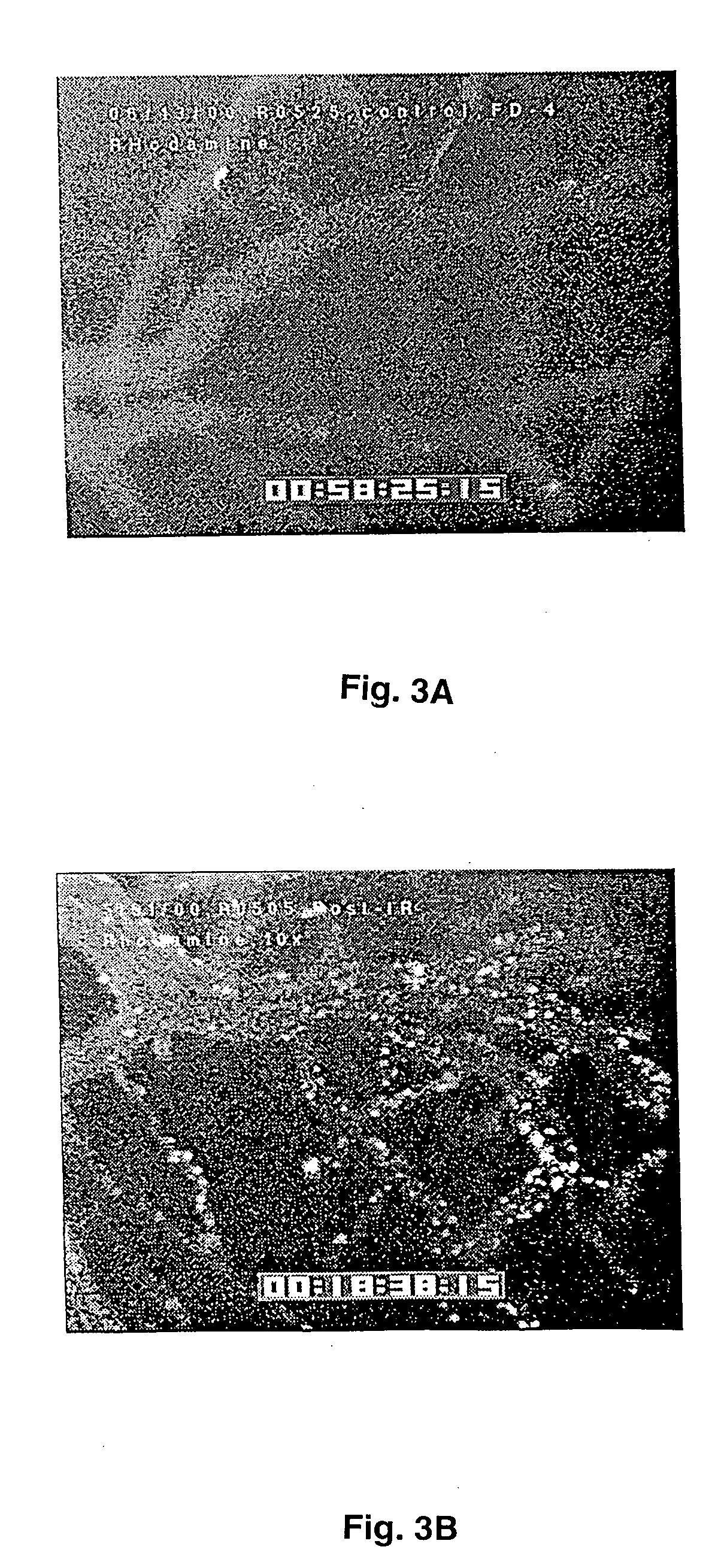Targeting drug/gene carriers to irradiated tissue
a gene carrier and drug technology, applied in the field of radiotherapy, radioimmunobiology, nuclear medicine, can solve the problems of irradiation damage limited to the irradiation damage can be limited to a core of diseased tissue and the immediate normal tissue surrounding, and irradiated human umbilical vein endothelial cells cannot support the adhesion of hl-60 cells under in vitro radiation damage,
- Summary
- Abstract
- Description
- Claims
- Application Information
AI Technical Summary
Benefits of technology
Problems solved by technology
Method used
Image
Examples
example 1
General Animal Care
[0065] C57BLK mice, selected as a relatively inexpensive mammalian species to model targeted drug delivery to irradiated tissue, are utilized for in vivo experiments involving the cranial window preparation. Investigations concerning targeted drug delivery are conducted in an animal system since physiological changes and the resultant effects on the microvasculature are investigated in vivo to establish baseline data for the modeling studies.
[0066] Approximately 20 mice / month are purchased and housed for an average of 30 days. These mice are housed 2 per cage under 12 hr light / dark cycles with food and water ad libitum. Adult C57BLK mice are anesthetized with an i.m. injection of 87 mg of ketamine / kg and 13 mg of xylazine / kg. The body temperature is maintained between 36 and 37° C.
[0067] The cranial window is prepared for observation under an intravital microscope as discussed herein. The mice are euthanised by an overdose of KCl. Single or fractionated doses ...
example 2
Statistics
[0068] In FIGS. 2, 3, 5, 7, 8 and 11, significant difference from appropriate controls is indicated by * (p<0.05) or ** (P<0.01) as determined from one way analysis of variance (ANOVA) and a multiple comparison method (Fisher's least significant difference, LSD) to discriminate between the means. Data are presented as Mean±SEM.
example 3
Generation of Ligand-Coated Polystyrene Particles
[0069] Due to their ease of use, polystyrene particles were used initially. The polystyrene particles were purchased from Bangs Laboratories (Fishers, Ind.). The particles are available in a variety of diameters, ranging from 20 nm to 10 mm, and with various incorporated fluorescent dyes. Since particles in the nanometer range cannot be detected by bright field light, fluorescent nanospheres were used and the fluorescent label was used to detect the nanospheres on a cellular surface.
[0070] The ligand coated polystyrene particles were prepared as follows. The particles were coated with protein A via passive adsorption. The particles were incubated in a 0.1 M NaHCO3, pH 9.2 buffer containing 300 mg / ml protein A at room temperature for over an hour. Following the adsorption, the particles are washed, incubated in a blocking buffer, i.e., Hank's balanced saline solution supplemented with 1% human or rat serum albumin, washed and incuba...
PUM
| Property | Measurement | Unit |
|---|---|---|
| shear stress | aaaaa | aaaaa |
| time | aaaaa | aaaaa |
| body temperature | aaaaa | aaaaa |
Abstract
Description
Claims
Application Information
 Login to View More
Login to View More - R&D
- Intellectual Property
- Life Sciences
- Materials
- Tech Scout
- Unparalleled Data Quality
- Higher Quality Content
- 60% Fewer Hallucinations
Browse by: Latest US Patents, China's latest patents, Technical Efficacy Thesaurus, Application Domain, Technology Topic, Popular Technical Reports.
© 2025 PatSnap. All rights reserved.Legal|Privacy policy|Modern Slavery Act Transparency Statement|Sitemap|About US| Contact US: help@patsnap.com



